[ Page 3 ]
1/72 scale model of T-28: SWORD kit
... continued from page 2....
After so many years waiting after the Heller, another T -28 in 1/72 scale was released in 2012 by SWORD. The short-run kit was released in 2 boxes.
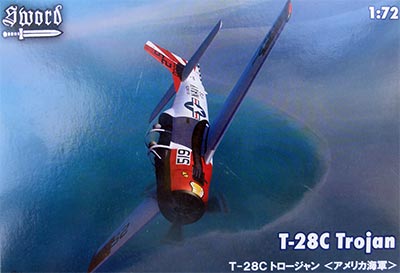

T-28B , kitno. 72066 with markings for
(1) US NAVY ATU-105, NAS Memphis;
(2) JASDF Japan at Hamamatsu, 1964;
(3) JASDF Japan of 501 photo squadron, 1961;
(4) US NAVY VT-27, Davis Monthan, was it seen at the storage in 1983?
(5) US NAVY VT-2, NAS Whiting;
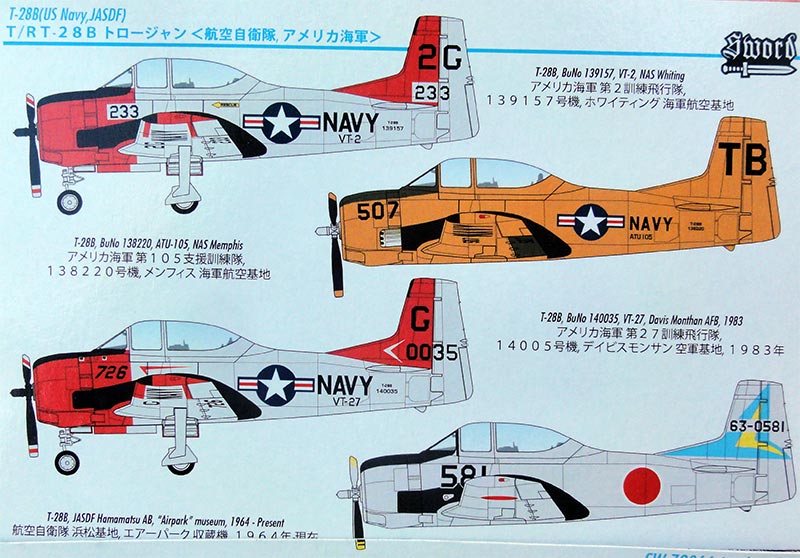
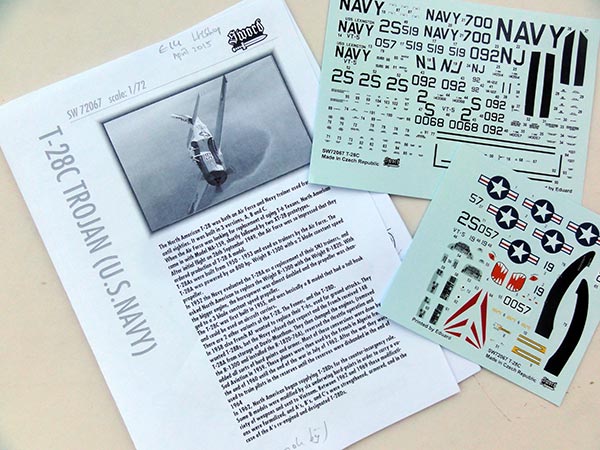
and the other kit release...
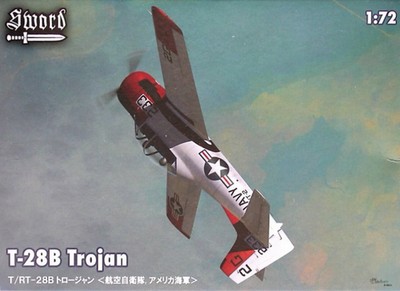
T-28C with arrestor hook, kitno. 72067 with markings for
(A) US NAVY VT-5, NAS Saufley Field;
(B) US NAVY VT-5 in 1963;
(C) US NAVY VA-122, NAS Miramar, 1976.
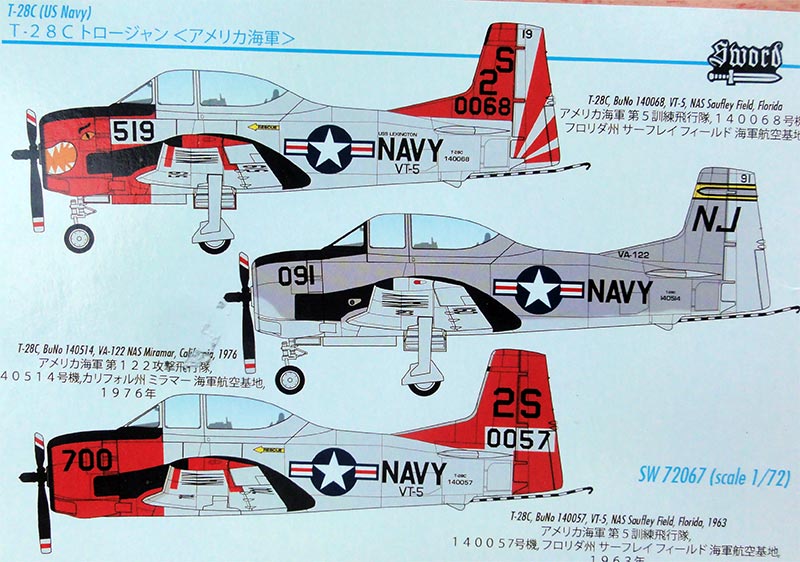
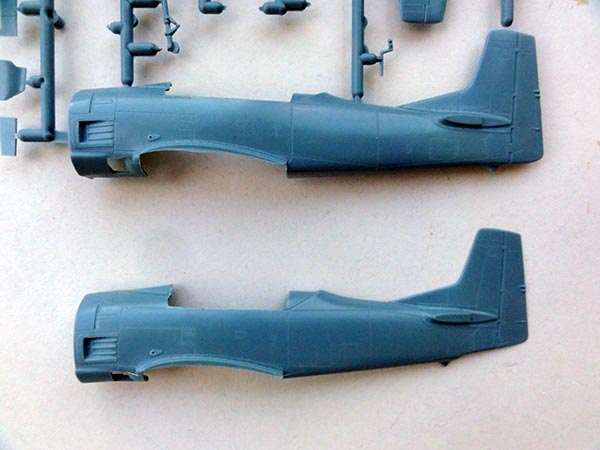
The main difference between the kits is a different fuselage shape at the lower tail end of the T-28C to accommodate a tail arrestor hook.
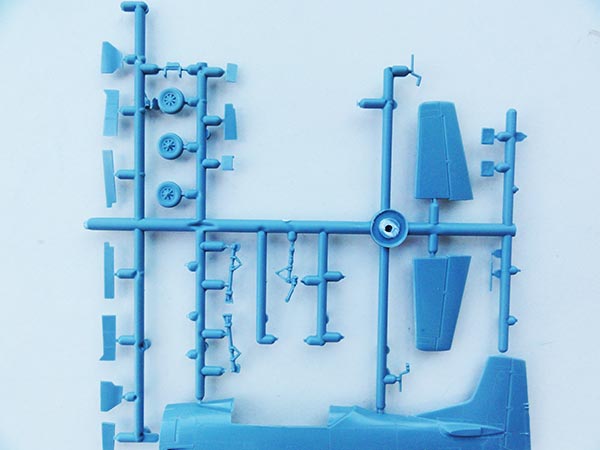
There are some nice engraved panel lines. The decals (printed by Eduard) look with the main markings good but the stencils look far too small to me.
The clear parts for the separate canopies look good. The SWORD kit has the initial standard canopy hood (so not the bigger Fennec one). The T-28B kit also has some glass parts to represent some camera's in the lower belly of a RT-28 (as used by JASDF).
There is a plastic engine but also a resin engine in the kit. It will fit inside the cowl so I did not bother to add push rods.
In the kit instructions is a large strange error: the main undercarriage legs positioning has been shown in correctly; the actual wheels should be at the outboard sides (and not inboard as shown). Simply reverse parts 21 and 22. And the higher ends of the center doors are at the rear.
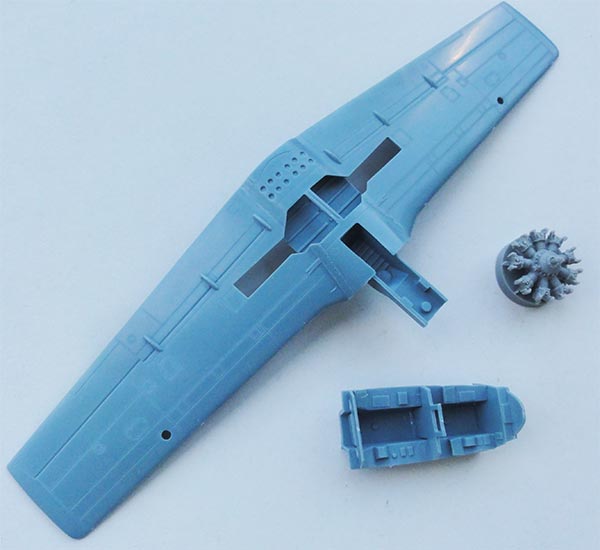
The kit is for real T-28 in 1/72 as used by many countries over the World.
I got 3 kits that will be made in different schemes for the World Air Forces in Plastic collection.
The general construction of each kit is straight forward but it is a short-run kit with large sprue gates, so use a razor saw here. Parts are unnumbered so use the layout scheme provided. Also the plastic has a shiny sheen which is not what I prefer. There are not alignment pins, so take care to align the main parts.
The cockpit is adequately detailed. I painted the main cockpit parts and tub medium grey and some harnesses were set on the seat made from painted masking tape. Kit decals are nicely provided for the instruments and consoles.
SWORD recommends adding a lot of nose 10g weight inside which indeed is at least required to prevent "a tail sitter". But the plastic of the gear is very soft, so I picked the safe way and will use thin metal wire sugerglued to the belly to keep the model standing on its nose.
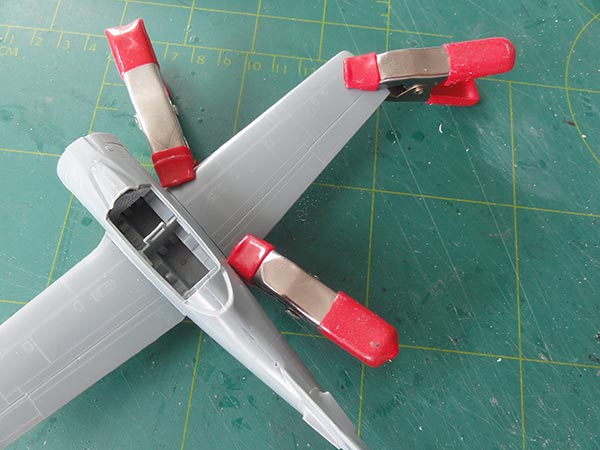
Some filling with putty and sanding is needed. The fitting of main gear bays is a bit difficult, I had to cut and use white glue to fill gaps.
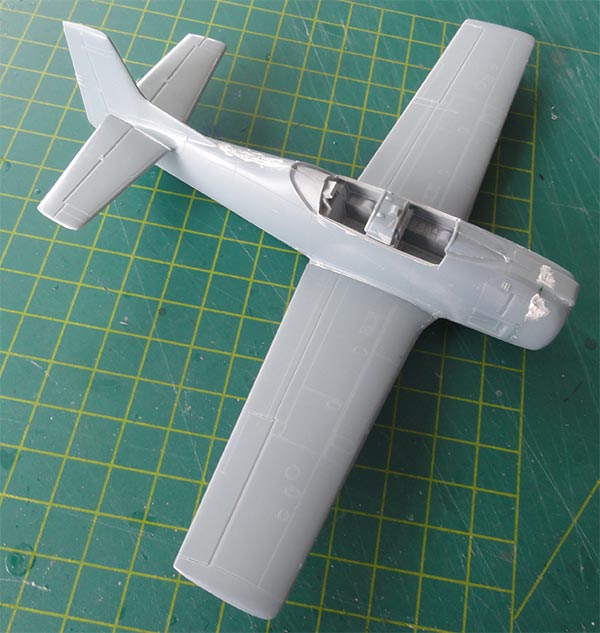

The moving surfaces edges were inscribed deeper with a scriber. They are quite noticeable on a T-28.
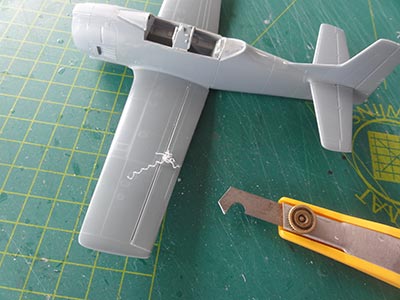

A light grey base coat was airbrushed with a coat of Revell Aqua 75 "steingrau" acrylic thinned with a mix of the Revell acrylic thinner. Some parts were airbrushed while still in their sprues like the white inside surfaces of the many doors.
T-28 propeller colours may vary, so check photo's. Most props are black at the rear (to avoid blinding the pilot) and light grey at the front with white-red-white of yellow tips. Fitting the propeller to the engine needed drilling the hole deeper and ensuring to have the correct separation with a piece of rod.
The colours of moving surfaces like the ailerons, elevator flaps and rudder vary. Some are white, but often the surrounding colour. The shape of the usual black exhaust panels on the fuselage sides also varies. Usually a black anti-glare panel is seen in front of the windscreen.
Each model got a varnish coat airbrushed with Johnson Future / Clear / Pledge.
This gives an even sheen and protects
the decals. Finally, static dischargers were added made from thin
fishing wire at the stabilizer, wing tips and rudder and these painted
black. The canopies were set open en slided aft, note that the forward
canopy than tilts up a bit at its front edge.
The first kit was made as a T-28B in a scheme of the South Vietnam Air Force. I used various Squadron Signal "In Action" special publications book here and opted for a T-28B aircraft but on photos it was seen that it did not carry the arrestor hook. Probably to save weight and as the aircraft was operated from land bases. Decals from the old Heller kit were used for the main markings.
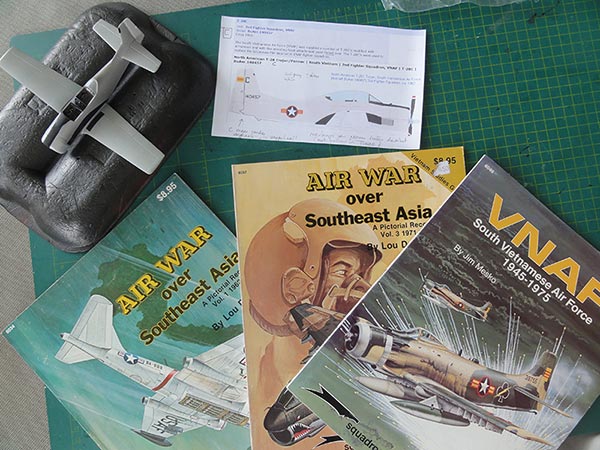
The standard canopy hood (so not the bigger Fennec one) of the SWORD kit is correct here.
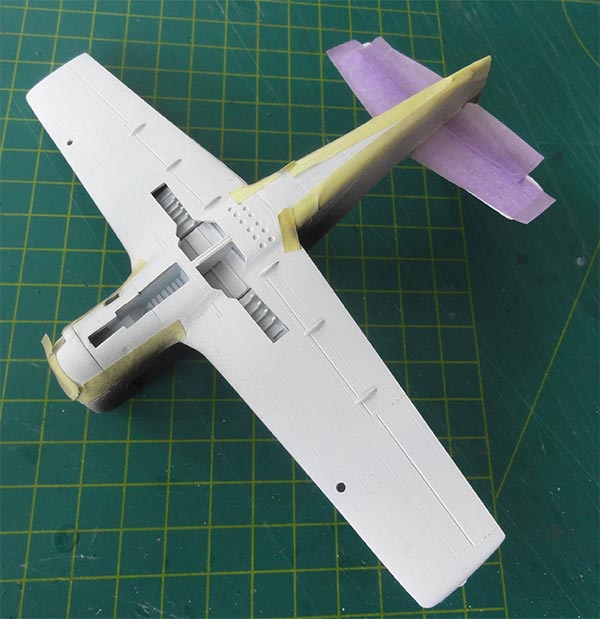
Now the colours were airbrushed: white lower surfaces and upper surfaces FS26440 Gull grey using Gunze Sangyo H325. The anti-glare and side panels are black.
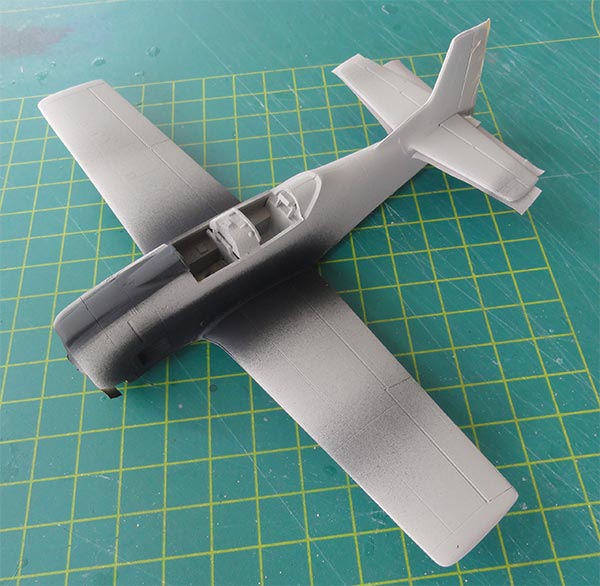
Note also the gull grey moving surfaces, except for the rudder.
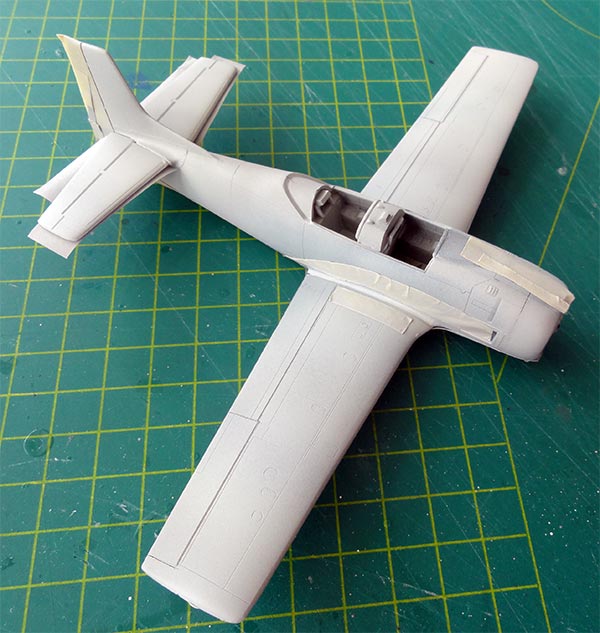
.
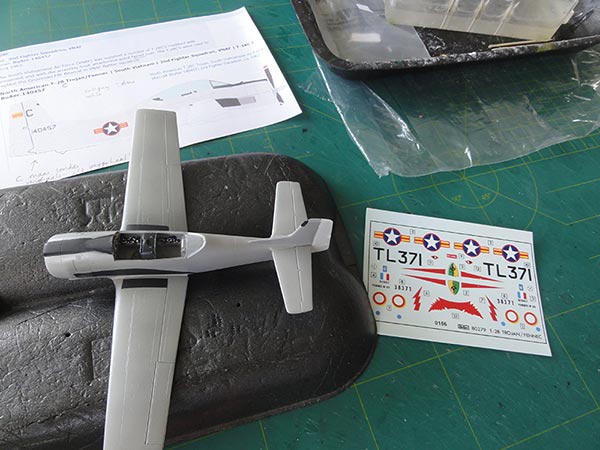
The Squadron Signal "In Action" books came in handy.
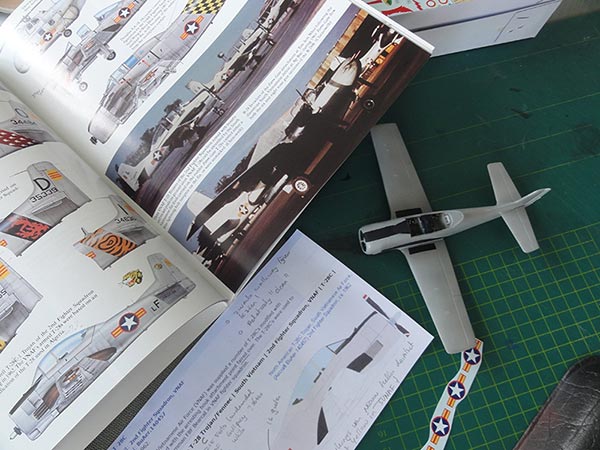
Completing the model was a described above. Propeller tips are white-red-white. A nice T-28 in the collection.
South Vietnam
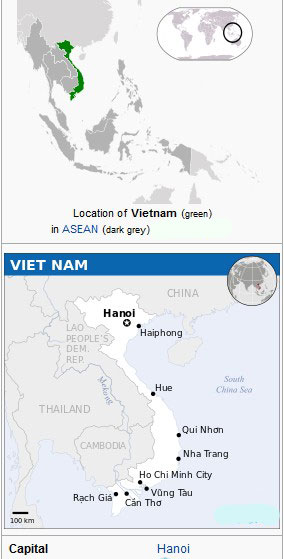
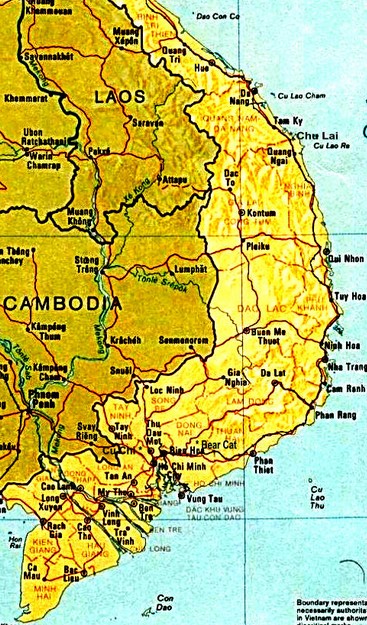
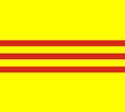

[South Vietnam before 1974>> area: 173,800 sq.km | population: 19 million in 1974 | former capital: Saigon ]
The South Vietnam air force was set-up in 1955 as the country was ruled by Emperor Bao Dai with large French influences. The air force started with French pilots and aircraft including the B-26, Flamant transports and later F8F Bearcats. The IndoChina War was triggered by the Cold War and became the large Vietnam war with communist North Vietnam. That resulted in the South Vietnam air force growing substantially with also American USA involvement with "training and advisors". Aircraft operated were also Cessna A-37, A-1 Skyraiders, some F-5's and many T-28's. After the Tonkin Gulf incident, the US Army and USAF developed a large presence whereas the US NAVY flew strikes from aircraft carriers.
The Vietnam war was a terrible conflict with many casualties and more bombs dropped than in the entire Second World War. In the USA there were also many protests. Despite the Paris Accord in 1973, the fighting continued. After the fall of Saigon in 1975, South Vietnam ceased to exist and Vietnam was now 1 country under Communist rule.
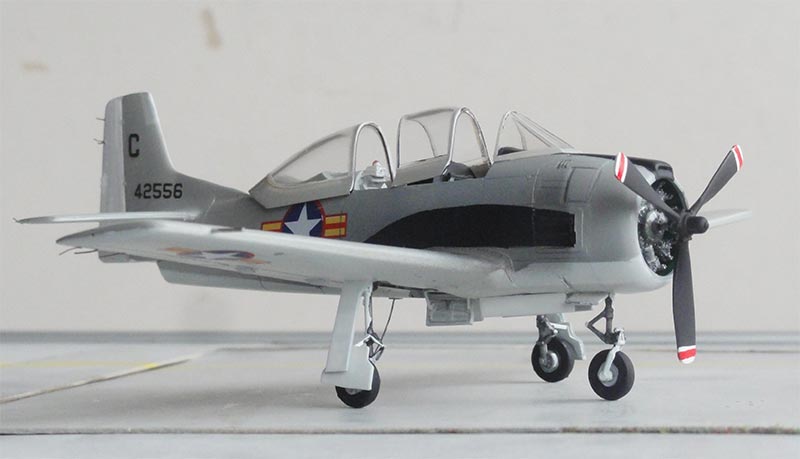
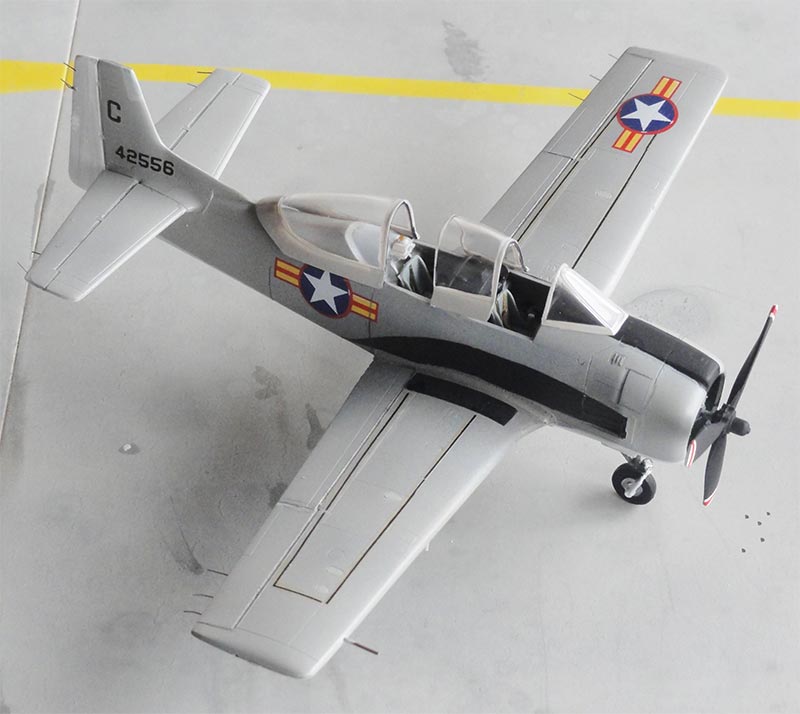
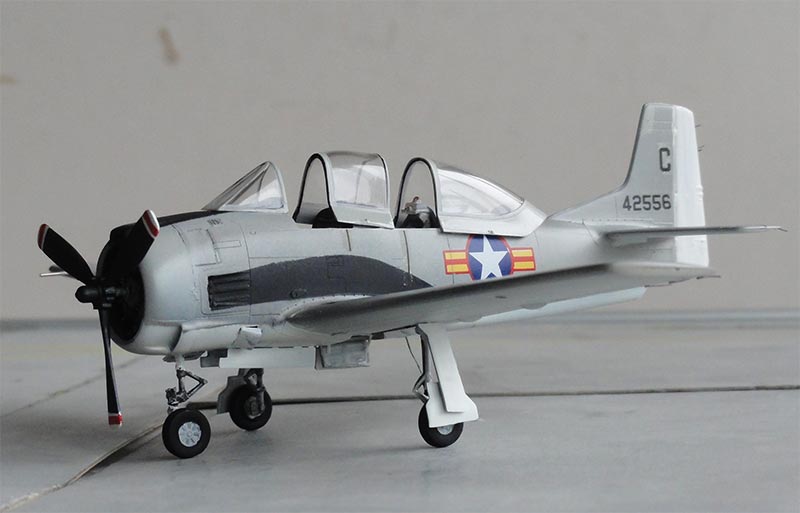
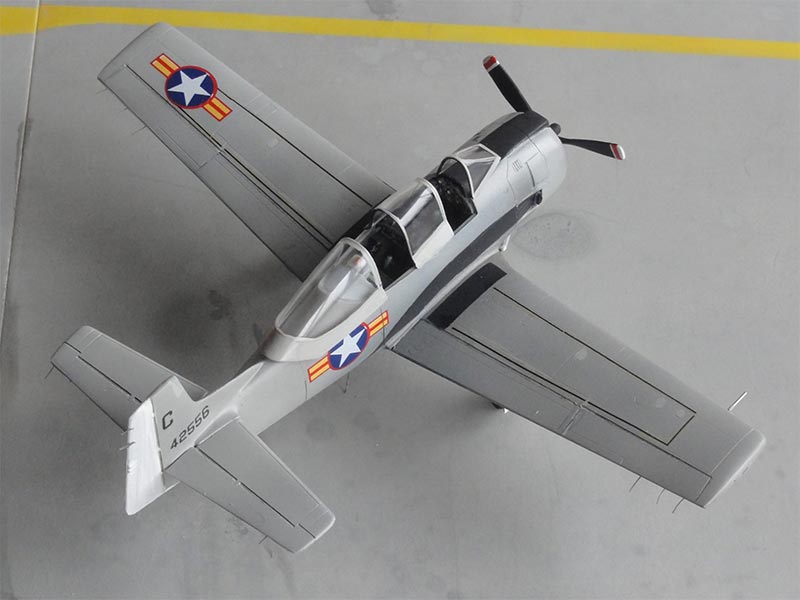 ... at a South Vietnam air base with a C-130 on the background...
... at a South Vietnam air base with a C-130 on the background...
The second T-28B kit was made as was probably a T-28D (AT-28D) of the Philippines Air Force 15th Strike Wing as used in the early 1990s. The type was used against the Moro separatists inside the country. It was an over painted aircraft with a very dark almost black camouflage. The painting was done very crude at the real aircraft with some green patches seen.
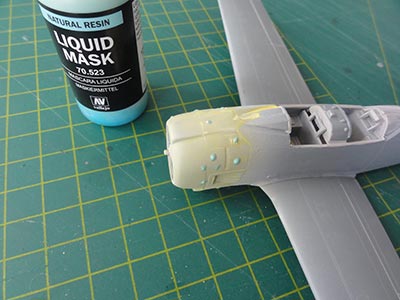
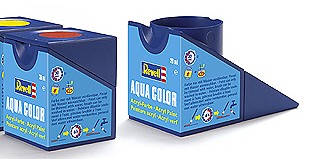
First I airbrushed some yellow green zinc-chromate at some spots on the cowling. These were masked with blobs of maskol. I also airbrushed the back side panels aft of the exhausts. Next, after masking the anti-glare and black side panels, came the overall colour of Revell Aqua 40 black/-green acrylic.
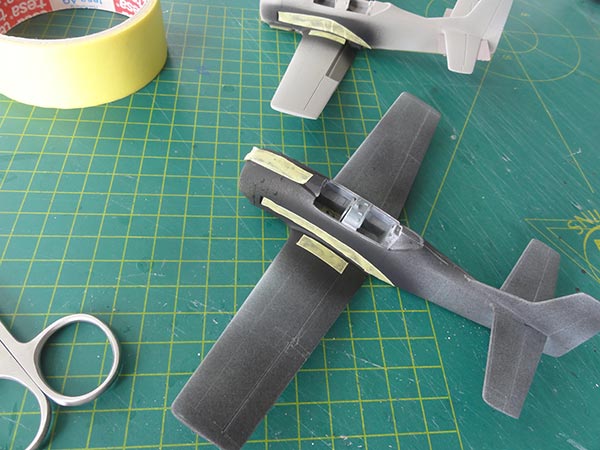
The Philippine markings were printed on decal sheet after scaled to approx. sizes. (see here how...). Some other markings like the tail numbers came from the spare decal box.
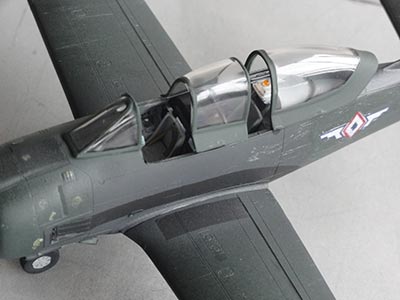
The rest of the model was completed as described above. A special very weathered T-28D is now in the collection.
Philippines



[area: approx 300,000 km2 with many islands | capital: Manila | population: 107 million | GDP 3,500 USD per capita nominal ]
The Philippine Air Force, "Hukbong Himpapawid ng Pilipinas", was established in 1947 after the country became independent in 1946. Though aviation started earlier with some military aircraft used after the First World War with an Army Air Corps in the 1930s. After the end of the severe Second World War in the Pacific, the Air Force used types like the P-51 Mustang. There was a strong US military presence as well. In the 1950s and 1960s jet aircraft were obtained F-86 Sabres and T-33 trainers. The first Northrop F-5 arrived in 1966 to replace the F-86. A rather uncommon fighter used was the Vought F-8 Crusader, acquired second hand from the US NAVY in 1977 and it kept flying until 1991. T-28 aircraft were also used, also for ground attack against rebels and separatists. Other examples of the aircraft used are the OV-10 Bronco, S-211 jets and SF-260 trainers and various transport aircraft like the Fokker F-27 and GAF Nomad and obviously helicopters.
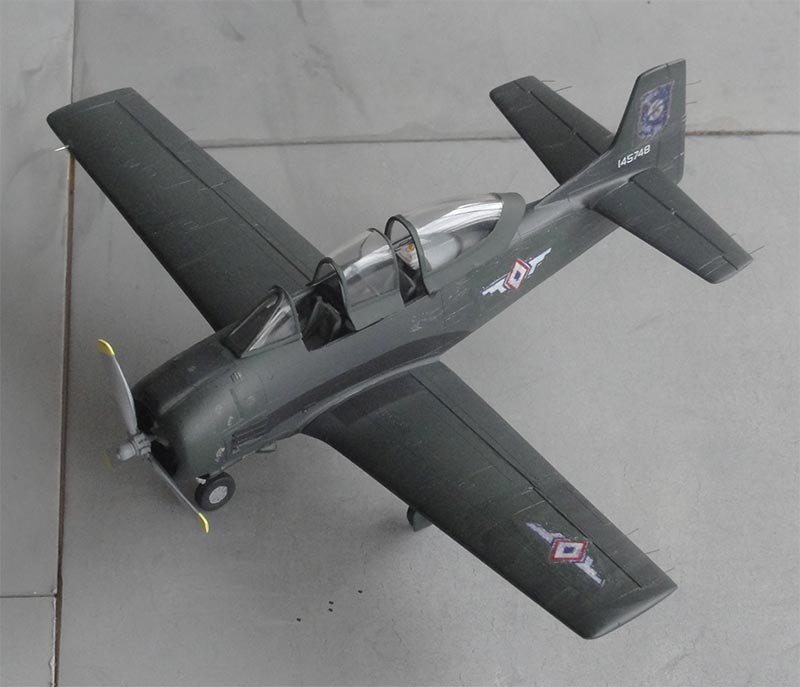
T-28D Philippines Air Force 15th Strike Wing, early 1990s. The type was used against the Moro separatists inside the country.
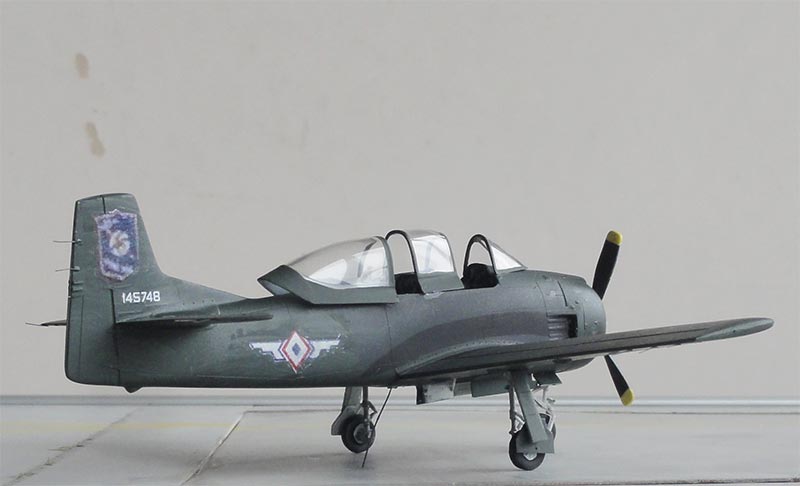
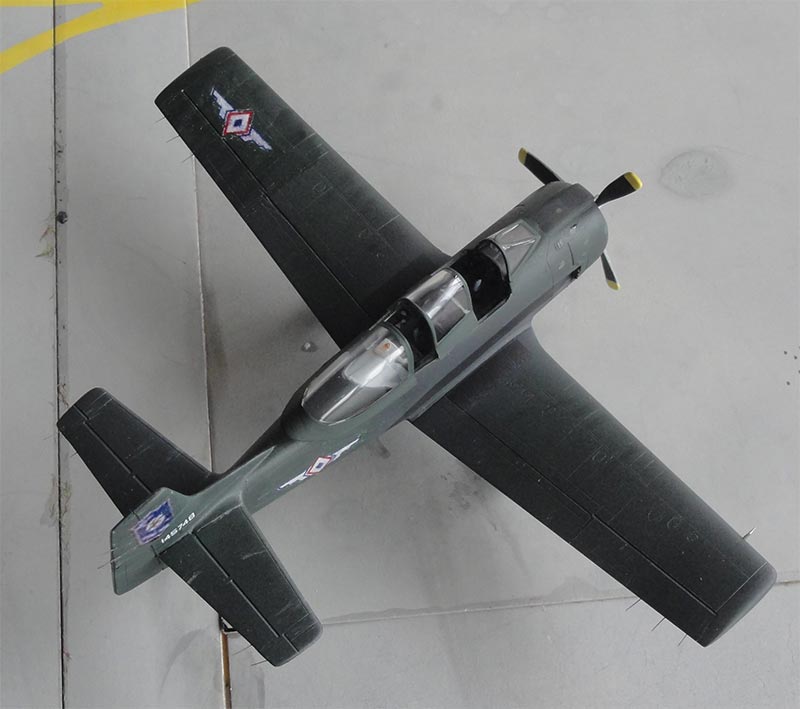
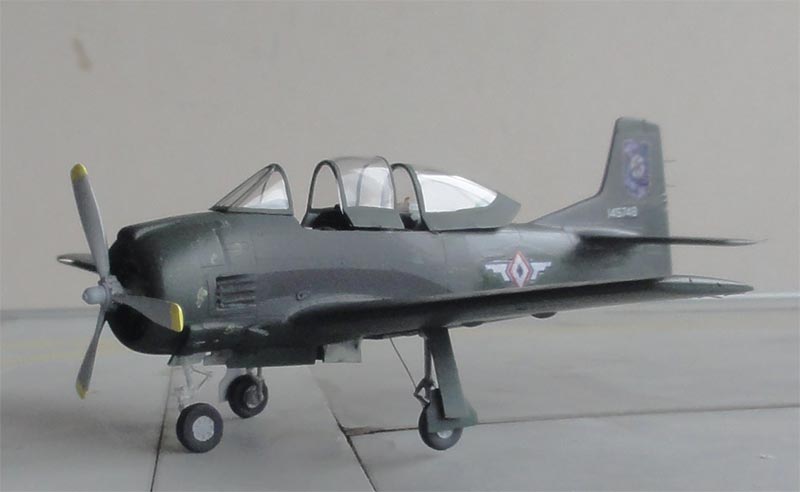

On to next [ Page 4...]
Back to 1/72 Models.......
(c) Copyright "designer"/ All rights reserved. Your comments are welcomed by webmaster
Created this page
November 18, 2017